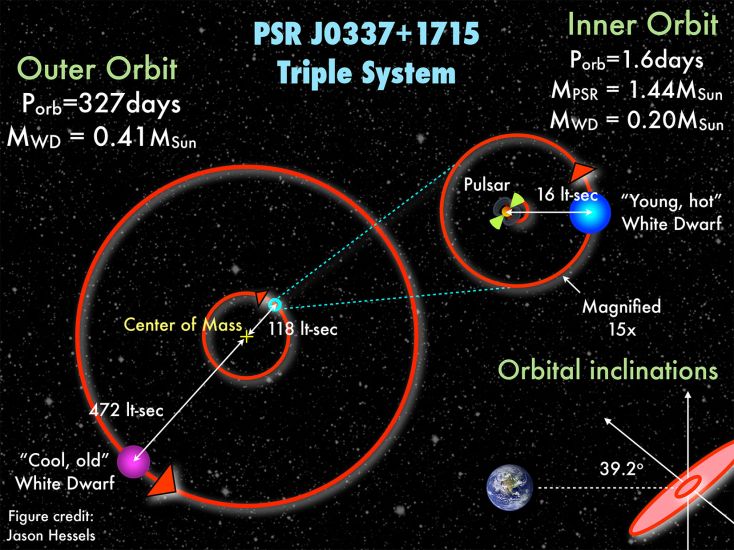An international team of astronomers using the Green Bank Telescope (GBT) has discovered a pulsar that is orbited by two white dwarf stars. Pulsars are rapidly rotating neutron stars that can be used like precision astronomical clocks. This is the first time that astronomers have found a triple star system that contains a pulsar, and the discovery team has used the pulsar's clock-like properties to turn the system into an unparalleled precision laboratory for studying the effects of gravitational interactions.

The necessary data came from an intensive observational program using several of the world's largest radio telescopes: the GBT, the Arecibo radio telescope in Puerto Rico, and ASTRON's Westerbork Synthesis Radio Telescope in the Netherlands. The team reports their findings in the online edition of Nature on January 5 and will present them at the 223rd meeting of the American Astronomical Society in Washington DC on January 6.
For a little more insight into the project see this:
http://www.astron.nl/about-astron/press-public/news/gravity-lab-discovered/gravity-lab-discovered-pulsar-unique-triple-st

